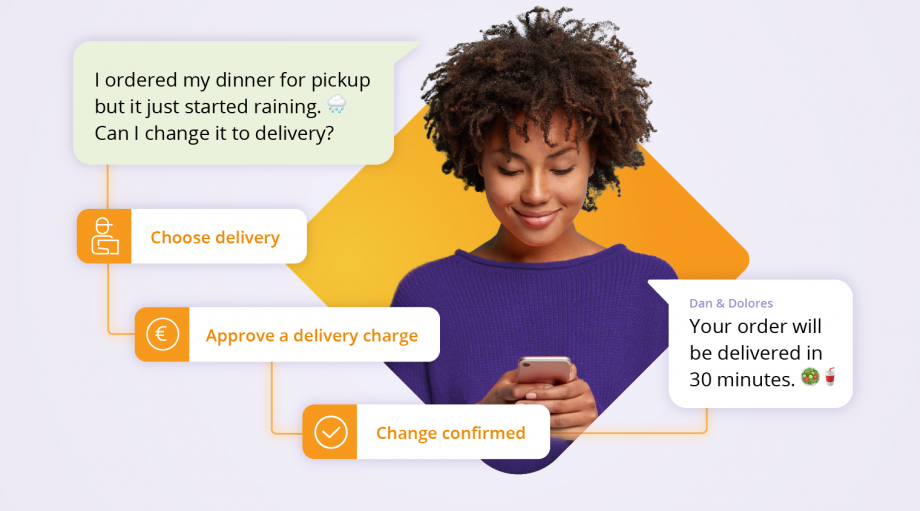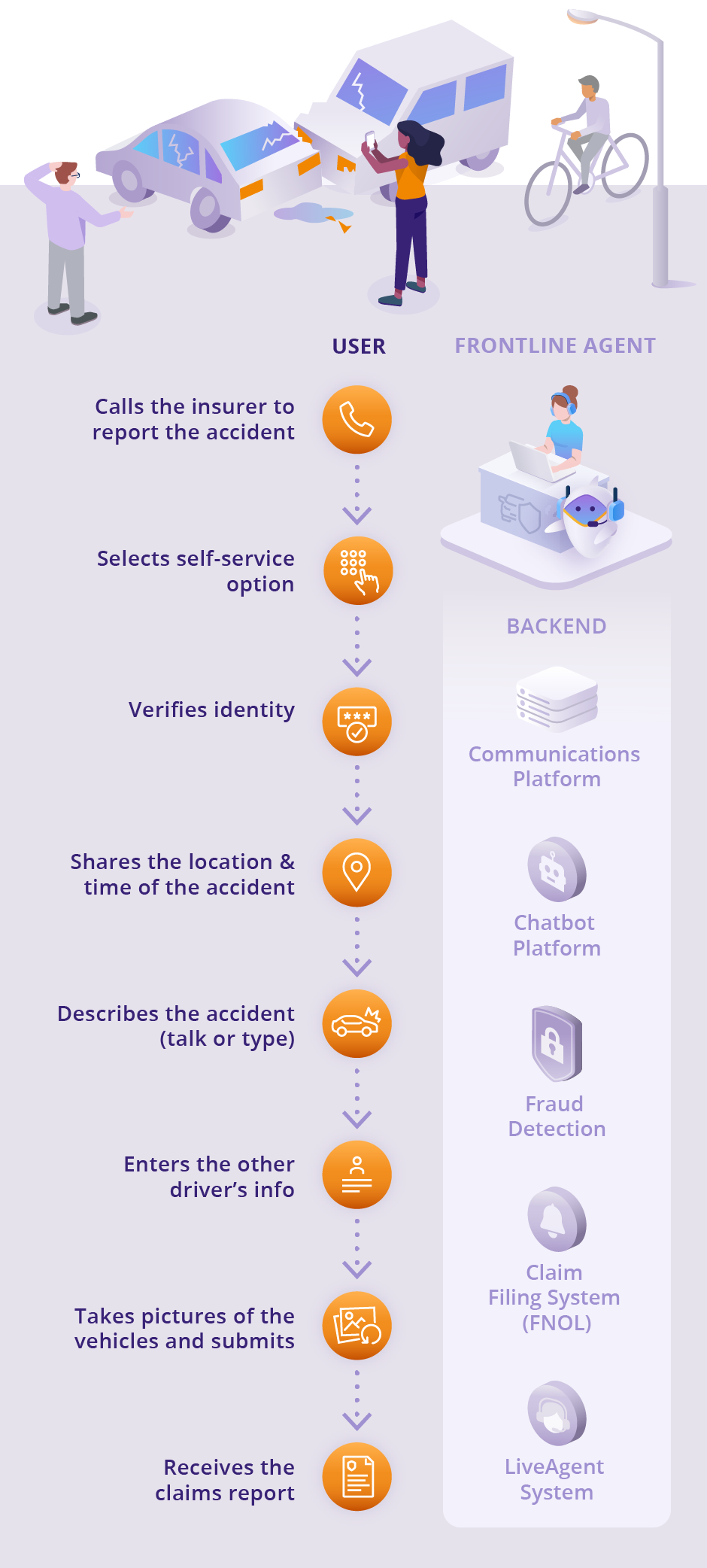Connected Experience in Business Transformation: Is Connected Experience just another name for a digital experience?

The most recent buzzwords in the world of business transformation are “connected experiences” (CE). Looking at the concept plainly, it can be defined as immersive customer experiences with multiple customer touchpoints, including apps, services, people, and physical spaces.
In reality, a connected experience enables users to achieve what they want efficiently, no matter where they started their journey, by guiding them with personalization and automation.
We’ll be diving into the deep ends of the concept of connected experience, discussing what this means for your business, what your customers need when interacting with your brand, and the key areas you should be exploring to create a truly connected experience.
Look out for our July issue, when we’ll explore the connections between organizational agility and connected experiences.
So, what is, in fact, a connected experience?
A broad concept that can mean everything and nothing, the connected experience has been around for a number of years. It originated in the idea of service blueprinting in 1980, when blueprints were used to visualize all actions needed for a service to function—those visible to the customer and those that aren’t.
As a result of greater digitalization, service blueprinting developed into customer journey mapping in recent years, moving the focus from processes to people and looking into the customer’s journey before, during, and after buying from a brand.
With the growing importance of customer-centric experiences, customer journey mapping is now enveloped into a broader concept of connected experience.
The connected experience, in essence, is about guiding and enabling your customers to achieve what they want to do no matter where they started the interaction with your brand.
Often customers don’t follow a prescribed engagement model—they jump between channels, hover, compare prices, save for later, and continue as they wish. Businesses should follow customers through their dynamic journey and make sure they are using the right tools to guide them to the desired result, or enable them to complete their goals as fast as possible.
What being connected looks like
One scenario where the connected experience is critical is when making a vehicle insurance claim. A customer gets into a car accident and needs to report this to their insurance company. Distressed about the situation, the customer checks damages and usually calls to report the accident. And what happens after the call is initiated is rapidly changing as more customer-centric insurers are reshaping the interactions to make them as simple and efficient as possible.
The goal is to enable the end-user to achieve what they want, with as little effort as possible.
Latin American company SimpleTECH does just that for San Cristobal Insurance by combining WhatsApp Business and chatbots with their claims filing system. They offer their customers an option to complete the entire filing process with self-service and human support when needed.
Thinking of what’s needed to create a smooth experience for their customers, San Cristobal Insurance uses machine learning to enable the customers to simply talk to the chatbot instead of typing the accident details. By training the AI to separate the noise in the background (as the customers usually report the accident from the roadside), they were able to improve the accuracy and speed of reporting, resulting in an average of 8 minutes to complete the entire filing process.
To achieve that kind of speedy interaction, the experience had to be designed from the customers’ point of view. What information is absolutely necessary for the customer to provide to verify their identity? The rest can be handled via the fraud prevention component that’s integrated into the backend. What’s the easiest way for the customer to report the location of the accident? In this case, the customer can simply use WhatsApp’s location-sharing feature. How best to describe what happened? The customer can simply talk about it, and the AI separates noise from the voice and transcribes it via a speech-to-text feature. How best to show the car damage? The customer can simply take a photo and hit send.
Once those simple steps are completed, the user receives a PDF with the formal statement from the insurer and can always go back to the company’s WhatsApp channel to see the filing document. No separate calls or emails are needed to complete an insurance claim. When companies reimagine the user journey from their customers’ perspective and connect the components necessary in the front- and backend, the customer’s experience becomes a delightful experience.
Another example of a connected experience is placing a mobile coffee order and skipping the queue at the coffee shop for pick-up. To play their part in respecting recent social distancing measures, customers often prefer to use a company’s mobile application to order and pay for their drink in advance and collect it at a specific location and time.
Starbucks is a well-known trailblazer of this type of connected experience. A customer can find out product availability, be informed of changes in their order status (preparing/ ready to collect), and store opening hours by just using one touchpoint – their mobile app. There is also an advantage for customers not living within walking distance of a coffee shop as they can place orders in the app and collect them at a particular point through the drive-thru.
Starbucks customers that use the company’s mobile app are also given the opportunity to influence its assortment and service. Users receive tailor-made order suggestions generated through a learning platform built by the Starbucks data scientists. They are asked to offer real-time feedback—in this way, using machine learning and automation, the app can show them recommendations for food and drinks based on local store inventory, popular selections, weather, time of day, community preferences, and previous orders.
One thing to note, though, it’s turned out that many brands have been unsuccessful at getting their customers to download and use their apps. Would you download your insurance company app just to file an accident report just in case you are involved in a car accident? Due to lack of user adoption and high maintenance cost, companies are discontinuing their app-driven strategies and looking more creatively to enable this type of experience; whichever channel their customers prefer to use.

What’s fueling user adoption?
When companies are leveraging technology like machine learning to guide customers through their interactions and automation to enable self-service when preferred. This facilitates a frictionless experience. A connected experience will ensure that the customer interaction feels consistent across all different touchpoints.
For consumers, a connected experience goes beyond linking the digital with the physical—it’s about doing it the way they interact with others; using genuine human interaction and storytelling. The customer’s behavior is constantly changing, and businesses need to adapt to doing things differently and meeting them on their preferred communication channels.
Take, for example, using augmented reality (AR) when buying furniture. Using a furniture store’s app, the customer can download the model they’re interested in and see a sofa in their own living room. In the context of their home—that’s a connected experience with a story. This technique offers an immersive customer experience while also helping the business minimize returns as users can find the best product fit for their house and estimate sizing and color fit.
Similarly, when dealing with an accident claim, customers prefer a channel to quickly and efficiently resolve their problem.
Since WhatsApp is one of the most adopted messaging applications worldwide, and it serves as a platform for both parties to communicate and share information, it seems only natural that businesses see broader customer adoption when they make their service available on this channel.
However, even in this age where instant messaging and online transactions are seen as everyday interactions, a significant number of customers still value in-store visits and face-to-face interactions. Therefore, following the user preferences between engagement via traditional and digital channels and creating a seamless transition between them is the secret sauce of a successful connected experience for your customers.
What are the business drivers for a connected experience?
A connected experience must do two things for your customers: it should be intuitive to the end-user, guiding them to achieve what they set out to do without disjointed moments; it should also enable your customers to self-serve when it’s preferred by them.
A recent study by McKinsey found that only 25% of companies provide meaningful value for digital transformations in the marketplace—meaning that most businesses still don’t give customers what they want.
When businesses are creating value for their customers, they usually focus on two areas: first, they look at what their customers like and what makes them engage. Second, they make thoughtful decisions based on their audience data and their understanding of the long-term customers’ behavior and wants.
This often leads to companies thinking about ways to use data to influence their customer’s behavior. For example, many airlines offer loyalty rewards and use their customers’ habits and data to incentivize customers to collect more air miles.
However, by looking at their customer’s journey in detail, businesses can not only understand how data needs to be joined together, but they can also spot problems or gaps in their existing customer journey and address how they are facilitating this two-way conversation with their customers.
What are the key drivers for businesses to enable a connected experience for their customers
1. Getting more out of their digital transformation investment
Most companies still offer only essential digital services to their customers, and few have created integrated omnichannel experiences. Nowadays, readily available solutions are accessible via APIs to integrate with data sources (your existing CRMs and external sources). Technology is no longer an impediment to connect with your customer with the desired level of personalization and automation.
2. Growing by acquiring and retaining customers
Customers are increasingly evaluating companies based on the quality of their experiences and often demand things to work the way they want when interacting with brands. Whether customers want to be using virtual reality to buy a piece of clothing from a virtual store or using 3D images in a web application to build and order pieces of furniture tailored to a room’s specification, they want to have choices.
3. Raise the customer lifetime value
By connecting the data from each customer interaction, companies can power their automation with continuous learning and improvement. This continuous feedback loop of machine learning and process automation ensures that the company provides the type of experience the customers want, hence boosting customer adoption.
With broader customer adoption of self-service, companies can scale up the operation, reap the benefits of cost savings, and raise customer lifetime value.
Connecting the dots to create a greater impact
The mindset shift necessary to drive a successful customer experience is an integral part of building an agile organization. In the next issue of Connections Now, we’ll explore why connected experience is at the heart of an agile organization—and what it means to the organization’s survival.
What’s next?
Look for our July issue where we do a deep-dive on the connections between organizational agility and connected experiences.
